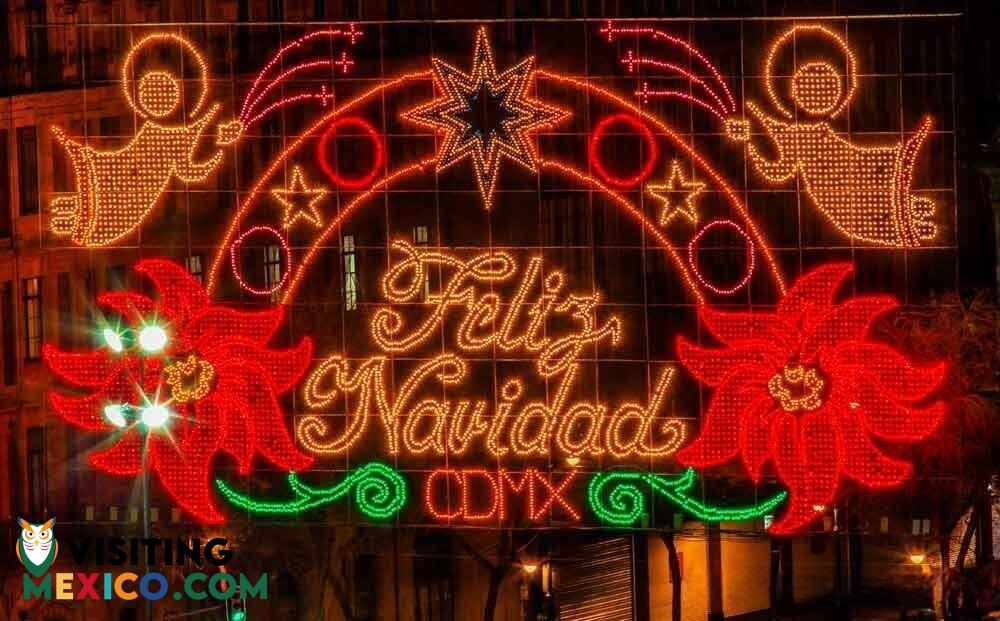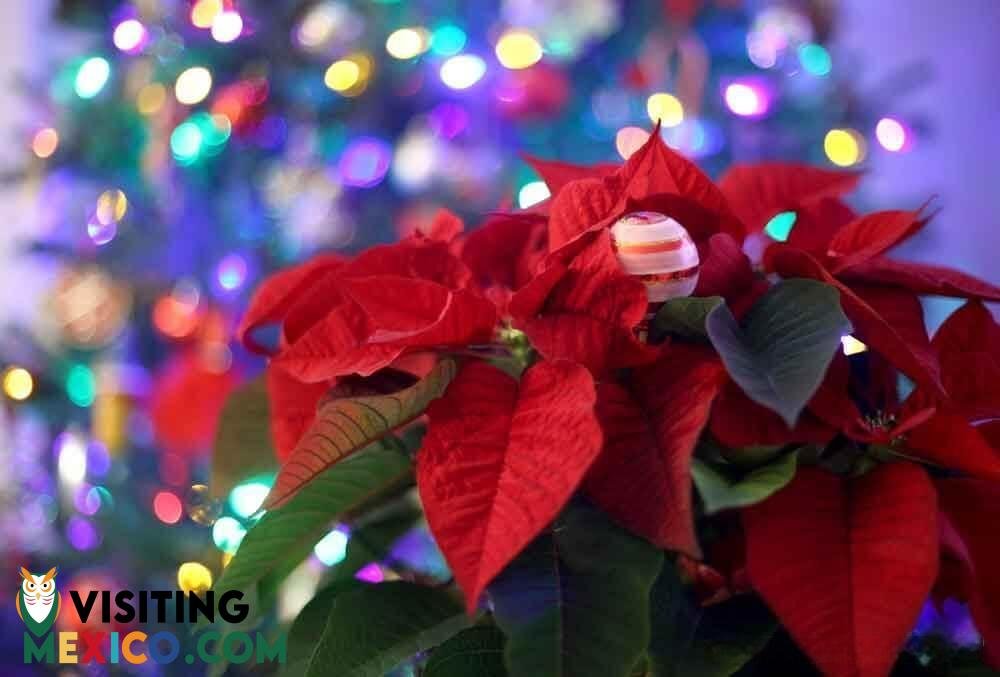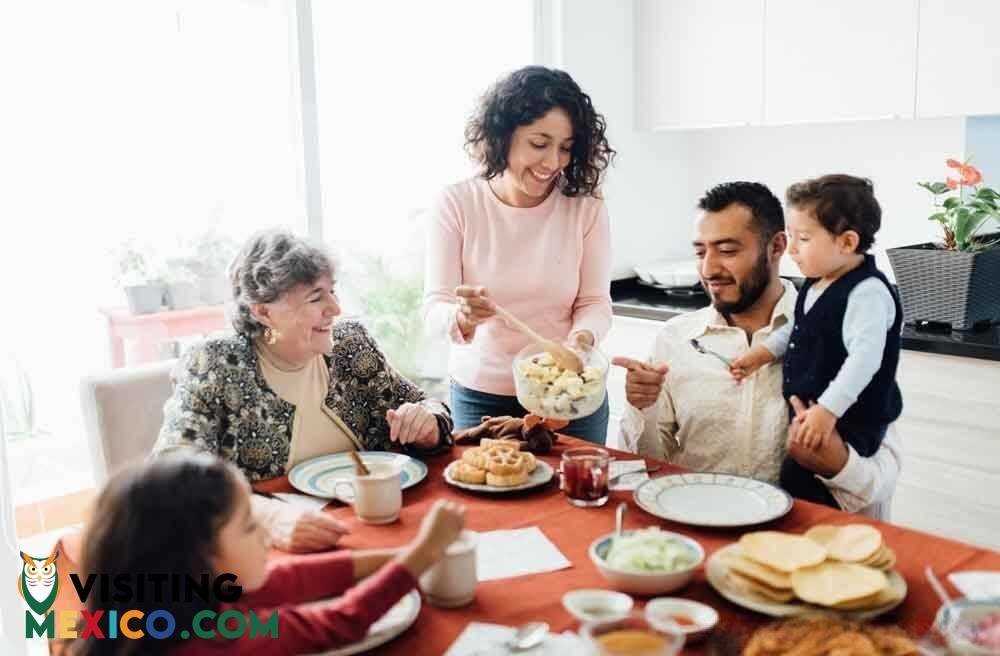Christmas In Mexico: Explained
Christmas in Mexico is not just one day, it is almost a whole month! Eighty percent of Mexicans are Catholic. So at this time of year, it’s no surprise that just about every village and town from Baja to the Yucatan celebrates Christmas. La Navidad, Mexican Christmas festivities start on December 12, with the feast of La Guadalupana (Virgin of Guadalupe). La Navidad comes near to an end on January 6 with Three Kings Day and an additional day on February 2, La Candelaria.

The Christmas Schedule
- December 12: Dia de la Virgin de Guadalupe (Day of the Virgin of Guadalupe)
- December 16-24: Las Posadas (The Processions)
- December 24: Nochebuena (Christmas Eve)
- December 25: La Navidad (Christmas Day)
- December 28: Dia de los Santos Inocentes (Day of the Sainted Innocents)
- January 6: Dia de Los Tres Reyes Magos (Three Kings Day)
- February 2: Dia de La Candelaria (Feast of the Holy Encounter)
Dia de la Virgin de Guadalupe (Day of the Virgin of Guadelupe)
The Celebration Tradition: The celebrations begin on December 11 each year on the eve of Dia de la Virgin de Guadalupe with singing and dance honoring Mother Mary. The Catholic Church celebrates December 12 with this special ceremony. Noon is when the Blessing of the Roses begins. Each person holds a rose and the story of Juan Diego is told.
The Reason Behind the Celebration: The story features an indigenous man named Juan Diego in 1951. He was among the first to convert to catholicism from the Spaniards.
As the story goes, Mother Mary appeared to Juan Diego in an area called Guadalupe soon after the Spanish conquest of Mexico. Mother Mary appeared before Juan Diego and told him to tell the bishop to build a shrine to her. The bishop did not believe Juan Diego that the Virgin Mary had appeared to him and wanted proof.
On December 12, Mother Mary visited Juan Diego and told him to collect roses and bring them to the bishop as a sign that Mary had visited him. When Juan Diego visited the Bishop, dozens of roses fell out of his cloak (which is still on display at Basilica of Our Lady of Guadalupe.) This was proof enough for the bishop and the Basilica of Our lady of Guadalupe was built. Juan Diego was buried in the church which can still be seen today. This is a beautiful story of two cultures coming together to celebrate Catholicism as well as Mexican heritage.
Las Posadas (The Processions)
The Celebration Tradition: Las Posadas is a nine-day celebration from December 16-24. Today’s Posadas celebration has piñatas for the children, delicious food, and plenty of friends and family. The main event is a nightly procession beginning with a Novena, prayer, followed by children dressed as Mary and Joseph, and an angel dressed in white. There are many others dressed in robes and even musicians following the procession. Luminaries light the path of the procession as it goes to several houses “seeking lodging” for a place for “Mary” to give birth and are refused entry. The participating parish selects a home each day where the posada will come, and sing and celebrate. These participating homes are called “Posadas Host”.
The History of the Celebration: The celebration comes originally from Spain and spread to Mexico and parts of the Southwestern United States. These processions represent when Mother Mary and Joseph were looking for lodging to give birth to baby Jesus, whose birth is celebrated on December 25.

Nochebuena (Christmas Eve)
The Celebration Tradition: On Christmas Eve, families go to church at midnight to welcome Christmas Day. After that families enjoy a meal together and some families open gifts. There may be roast pork or turkey, tamales, or salt cod as the main dish. Pozole is a soup made with chicken, pork, or hominy, and chilis, that is perfect for big families. Of course, the ensalada de Nochebuena, which is a salad with beetroot, pecans, pomegranate seeds, carrot, pineapple, and lettuce. This is a lively night full of food and don’t forget the fireworks.
The Reason Behind the Celebration: The midnight mass welcoming Christmas Day is called Misa de Gallo (Mass of the Rooster.) It is called Mass of the Rooster because it is said that the only time a rooster ever crowed at midnight was the night Jesus was born. This church service tells the story of the night Jesus was born.
La Navidad (Christmas Day)
The Celebration Tradition: Christmas Day (La Navidad) is a day to spend with family. Large-lit trees, poinsettias, and nativity scenes can be seen throughout the cities and homes. Fireworks, dancing, and singing are wonderful ways to enjoy the day as well.
The Celebration Reason: This is the day Jesus was born.

Dia de Los Santos Inocentes (Day of the Sainted Innocents)
The Celebration Tradition: This fun holiday is similar to April Fool’s Day in the USA. It includes telling bold-faced lies and playing tricks on one another. It represents the trickery of the innocent.
The Cause for Celebration: The story goes that King Herod of Judea, located in the modern-day Middle East, heard rumors that the new King of the Jews had been born, however, no one knew which child it would be. In fear that this child would attempt to overthrow him, he had all the newborn babies murdered. This day is in remembrance of the innocent lives lost.
Dia de Reyes (Three Kings Day)
The Celebration Tradition: This is the day the kids have been waiting for! Family and friends get together to open gifts and share a meal. There is a particular desert called Rosca de Reyes which is a sweet bread in the shape of a wreath. It is very similar to a King cake because a baby figurine representing Jesus is hidden in the bread. Whoever gets the piece with the figurine will host Dia de la Candelaria on February 2.
The Story Behind the Celebration: The story goes that three kings walked for days led by the north star to find where Jesus had been born. They brought gifts to the newborn baby.
Dia de la Candelaria (Feast of the Holy Encounter)
The Celebration Tradition: Dia de la Candelaria is the last Christmas celebration. Families will take the Jesus figurines from their home to the local church to be blessed. Afterward, everyone goes to a host’s house (the one that found the baby Jesus in the cake on Dia de las Reyes) to celebrate with a big feast! Some Cities even have parades and festivals to celebrate this day.
The Reason for Celebration: At the time of Jesus’ birth, women were not allowed to enter the Jewish temple until 40 days after they had given birth. February 2 is exactly 40 days after December 25. At this time, Jesus would have been presented to the temple.

Christmas Decorations in Mexico:
- Poinsettia. The red poinsettia (which the Aztecs called cuetlaxochitl) originated in Mexico and is named after Joel Roberts Poinsett. Joel Poinsett was the first United States ambassador to Mexico in the 1820s. He is responsible for introducing the Poinsettia as a Navidad plant.
- Ornaments. The most traditional Christmas ornaments are handmade of straw, tin, or clay. If you would like one of your own you can find them in local shops or at the Christmas markets.
- Christmas Piñatas. Christmas Piñatas are a particular type of Piñatas. They have 7 spikes representing the 7 deadly sins.

Other Christmas Events:
- Pastorelas. These theatrical productions portray the shepherd’s journey to see the newborn baby Jesus, much like the 3 kings. These plays can be comedic or more serious in nature as the shepherds encounter obstacles along their journey.
- Santa. Although it has gained popularity, Santa (also known as Papa Noel) is not as common in Mexico. Although some families do celebrate Santa, who brings gifts on Christmas Eve, most gifts are brought by the three Kings on Dia de Los Reyes.
Christmas Foods:
- Romeritos is a wonderful dish made of seepweed, potato, and shrimp, cooked in a delicious mole.
- Tamales are enjoyed year-round, but especially at Christmas time.
- Bacalao is a salted codfish often eaten on Christmas Eve.
- Pozole is a soup made with pork or chicken.
- Bunuelos is a fried dough fritter sprinkled with sugar, similar to a funnel cake. Delicious.
- Ponche Navideno is a hot fruit punch made from tejocotes, guavas, and apples, and flavored with cinnamon and sugar.
- Rompope is a drink similar to eggnog (plus rum).
Christmas in Mexico is such a magical event. Even if you are not religious it is a wonderful time to dive deep into Mexican culture. There are so many events going on and special performances, you do not want to miss out! And don’t forget the delicious food! So many new treats to try.


